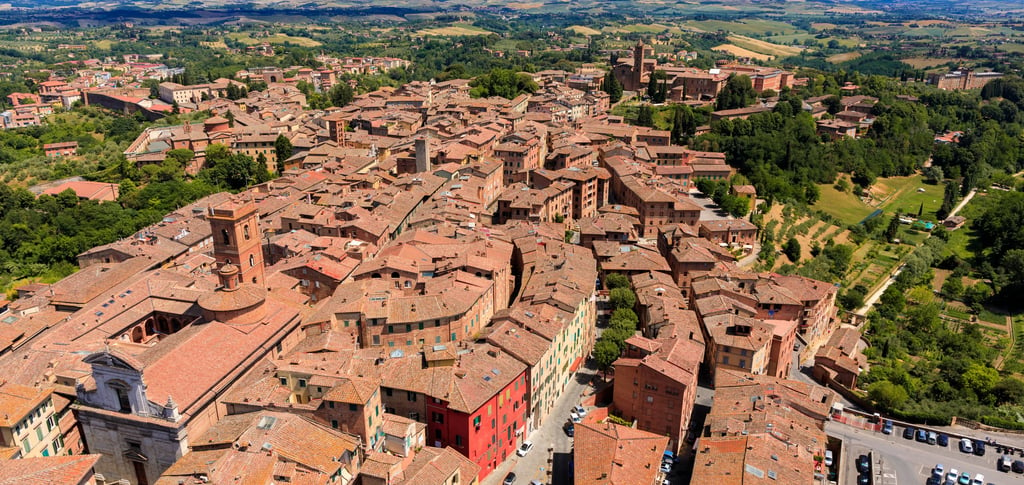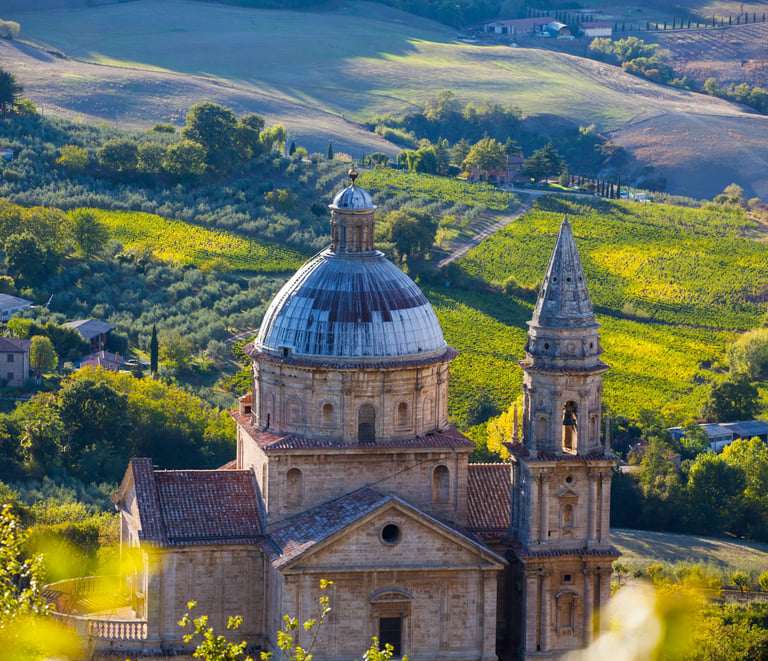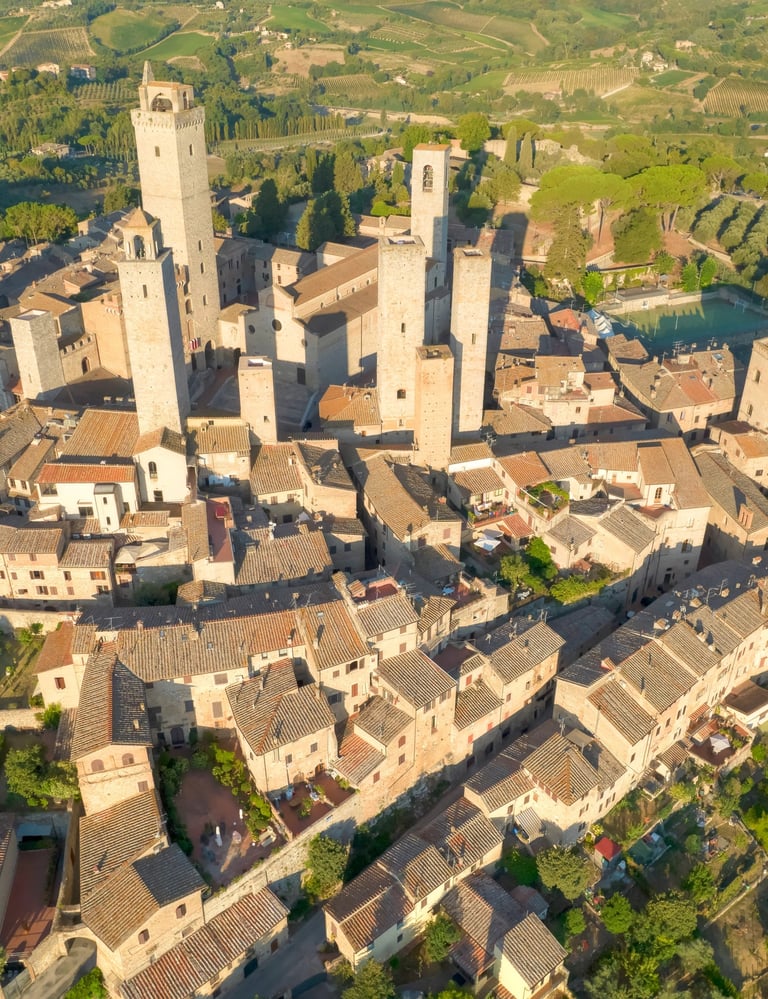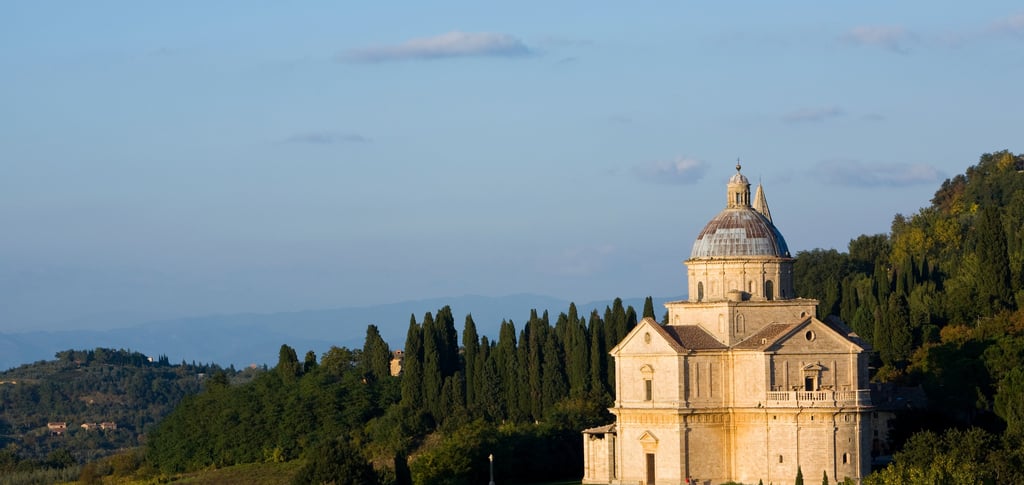Tuscany’s Wine Country: Vineyards, Villages, and a Taste of the Land
Picture this: you’re rolling through the sun-kissed hills of Tuscany, where vineyards stretch as far as the eye can see, draped in shades of green and gold. The air is rich with the scent of ripe grapes, and you can almost hear the gentle whisper of the vines swaying in the breeze. You stop at a quaint little village, its cobblestone streets inviting you to explore.
21 ESCAPESITALY


Picture this: you’re rolling through the sun-kissed hills of Tuscany, where vineyards stretch as far as the eye can see, draped in shades of green and gold. The air is rich with the scent of ripe grapes, and you can almost hear the gentle whisper of the vines swaying in the breeze. You stop at a quaint little village, its cobblestone streets inviting you to explore.
As you wander around, you stumble upon a charming enoteca—a wine shop—where locals gather to sip on their beloved Chianti. The owner, an elderly man with a twinkle in his eye, beckons you over and pours you a glass of ruby-red wine that sparkles in the sunlight. “This,” he says with pride, “is made from grapes grown right outside our door.” You take a sip and feel like you’ve just tasted sunshine itself.
Afterward, why not stroll through one of those sprawling vineyards? You might find yourself chatting with passionate winemakers who share stories about their craft—the long hours spent tending to their vines and how each bottle tells a story unique to that season’s harvest. It’s not just about drinking wine; it’s about connecting with the land and its people. As evening falls, head out to watch the sunset paint the sky in hues of orange and purple over rolling hills dotted with cypress trees. Tuscany’s Wine Country is like stepping into a postcard, where rolling hills meet charming villages and vineyards stretch as far as the eye can see. If you’re planning a trip, here are some main Tuscan villages you absolutely can’t miss, each with its own unique vibe.
Montepulciano
First up is Montepulciano, famous for its Vino Nobile. Stroll through the narrow streets lined with Renaissance architecture and stop by a local winery for a tasting—you won’t regret it! Perched on a limestone hill at an elevation of 605 meters above sea level, this town offers breathtaking views of the surrounding Val d’Orcia and Val di Chiana valleys. Don’t forget to check out the stunning views from Piazza Grande; it’s the perfect spot to sip your wine and soak in the scenery.
The town comes alive with events such as the Bravìo delle Botti, a barrel racing contest held in August, where teams from the town’s eight districts compete to roll an 80-kg wine barrel through the narrow streets to Piazza Grande. This event, which replaces a historical horse race dating back to 1373, adds to the town’s vibrant and community-driven atmosphere.


Montalcino
Next, head over to Montalcino, home of the renowned Brunello di Montalcino. This village has an enchanting medieval charm that will transport you back in time. Perched atop a hill offers breathtaking views of the surrounding valleys, including the Asso, Ombrone, and Arbia valleys, which are dotted with olive orchards, vineyards, and rolling hills. Be sure to visit the fortress at the top of town for panoramic views of the vineyards below—it’s truly breathtaking!.
Montalcino is renowned for its exceptional wines, particularly Brunello di Montalcino, one of Italy’s most prestigious wines, made from the Sangiovese grape. The region also produces Rosso di Montalcino, a younger and more approachable wine, as well as other varieties like Moscadello and Sant’Antimo. The unique terroir, divided into four slopes with distinct microclimates, contributes to the diverse characteristics of these wines.
San Gimignano
Then there’s San Gimignano, known for its medieval towers that create a striking skyline. This village is not just about looks; it’s also famous for its white wine, Vernaccia di San Gimignano.
The town is named after Saint Geminianus, a 4th-century bishop from Modena who is said to have saved the city from the invading Huns in the 5th century.
The historic center of San Gimignano, a UNESCO World Heritage Site, features several notable piazzas and buildings. Piazza della Cisterna, named after the large well in its center, and Piazza del Duomo, home to the San Gimignano Cathedral (Duomo di San Gimignano) and the Palazzo Comunale (Town Hall), are among the main attractions. The Palazzo Comunale, built in 1288, houses the Civic Museum, the Pinacoteca art gallery, and the Torre Grossa, which offers panoramic views of the town.
While you’re there, explore the local shops selling handmade crafts and indulge in some gelato—it’s considered some of the best in Italy!


Cuisine and Wine
In the Tuscan countryside, life revolves around the land. Locals live by the rhythms of the seasons, harvesting olives in the fall and grapes in late summer. Many families here have been making wine for generations, passing down knowledge from grandparents to grandchildren. Even the smallest vineyard feels like a world of its own, where every grape, olive, and bottle of wine tells a story of the soil and the people who tend to it.
In the wine country, meals are all about simple, fresh flavors that highlight the region’s ingredients. Start with bruschetta, a toasted slice of bread topped with local tomatoes, olive oil, and garlic, then move on to tagliatelle al tartufo, pasta with truffles gathered from the surrounding woods. In autumn, chestnuts are roasted over open fires, filling the air with a warm, nutty aroma.
And of course, there’s wine. Chianti Classico region where you’ll find picturesque villages like Radda and Greve. Each has its own unique character: Radda boasts ancient stone walls and quaint boutiques, while Greve is known for its lively piazza filled with wine shops and eateries Chianti with its bold, fruity flavor, pairs perfectly with local cheeses and cured meats. At the end of a meal, try a sip of grappa, a strong, traditional Italian spirit made from grapes. Every sip and every bite in Tuscany’s wine country brings you closer to the land, and you leave feeling as if a piece of Tuscany will stay with you forever.
Whether you are a history buff, an art enthusiast, a foodie, or simply someone who appreciates the beauty of nature and culture, Tuscany has something special to offer. Come and experience the enchantment of Tuscany.


Crunia Travel
Customized travel experiences await you.
Get in touch
hello@cruniatravel.com
+1 754 457 2624
© 2025. All rights reserved.


admin@cruniallc.com
